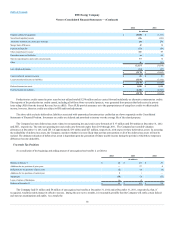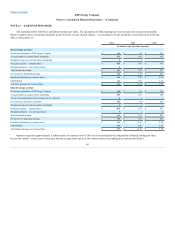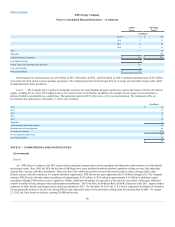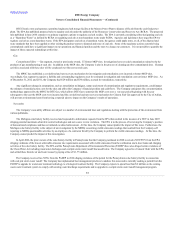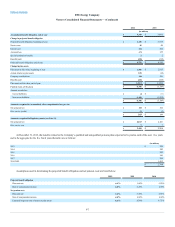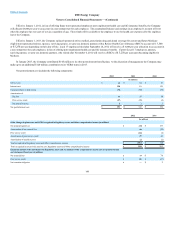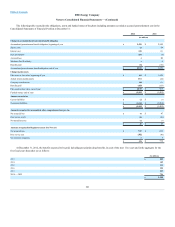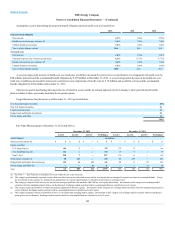DTE Energy 2012 Annual Report Download - page 94
Download and view the complete annual report
Please find page 94 of the 2012 DTE Energy annual report below. You can navigate through the pages in the report by either clicking on the pages listed below, or by using the keyword search tool below to find specific information within the annual report.
Table of Contents
DTE Electric owns and operates a permitted engineered ash storage facility at the Monroe Power Plant to dispose of fly ash from the coal fired power
plant. The EPA has published proposed rules to regulate coal ash under the authority of the Resources Conservation and Recovery Act (RCRA). The proposed
rule published in June 2010 contains two primary regulatory options to regulate coal ash residue. The EPA is currently considering either designating coal ash
as a “Hazardous Waste” as defined by RCRA or regulating coal ash as non-hazardous waste under RCRA. Agencies and legislatures have urged the EPA to
regulate coal ash as a non-hazardous waste. If the EPA designates coal ash as a hazardous waste, the agency could apply some, or all, of the disposal and
reuse standards that have been applied to other existing hazardous wastes to disposal and reuse of coal ash. Some of the regulatory actions currently being
contemplated could have a significant impact on our operations and financial position and the rates we charge our customers. It is not possible to quantify the
impact of those expected rulemakings at this time.
Gas
Contaminated Sites — Gas segment, owned or previously owned, 15 former MGP sites. Investigations have revealed contamination related to the by-
products of gas manufacturing at each site. In addition to the MGP sites, the Company is also in the process of cleaning up other contaminated sites. Cleanup
activities associated with these sites will be conducted over the next several years.
The MPSC has established a cost deferral and rate recovery mechanism for investigation and remediation costs incurred at former MGP sites.
Accordingly, Gas segment recognizes a liability and corresponding regulatory asset for estimated investigation and remediation costs at former MGP sites. As
of December 31, 2012 and 2011, the Company had $29 million and $36 million, accrued for remediation, respectively.
Any significant change in assumptions, such as remediation techniques, nature and extent of contamination and regulatory requirements, could impact
the estimate of remedial action costs for the sites and affect the Company’s financial position and cash flows. The Company anticipates the cost amortization
methodology approved by the MPSC for DTE Gas, which allows DTE Gas to amortize the MGP costs over a ten-year period beginning with the year
subsequent to the year the MGP costs were incurred and the cost deferral and rate recovery mechanism for Citizens Fuel Gas approved by the City of Adrian,
will prevent environmental costs from having a material adverse impact on the Company’s results of operations.
Non-utility
The Company’s non-utility affiliates are subject to a number of environmental laws and regulations dealing with the protection of the environment from
various pollutants.
The Michigan coke battery facility received and responded to information requests from the EPA that resulted in the issuance of a NOV in June 2007
alleging potential maximum achievable control technologies and new source review violations. The EPA is in the process of reviewing the Company’s position
of demonstrated compliance and has not initiated escalated enforcement. At this time, the Company cannot predict the impact of this issue. Furthermore, the
Michigan coke battery facility is the subject of an investigation by the MDEQ concerning visible emissions readings that resulted from the Company self
reporting to MDEQ questionable activities by an employee of a contractor hired by the Company to perform the visible emissions readings. At this time, the
Company cannot predict the impact of this investigation.
In April 2006, the prior owners of the coke battery facility in Pennsylvania that the Company purchased in 2008 received a NOV/FOV from the EPA
alleging violations of the lowest achievable emission rate requirements associated with visible emissions from the combustion stack, door leaks and charging
activities at the coke battery facility. The EPA and the Pennsylvania Department of Environmental Protection (PADEP) have also alleged certain violations of
the Clean Water Act including wastewater discharges and coal pile storm water runoff discussed below. The Company agreed to a Consent Order with the EPA
and settled these historic air and water issues by paying a fine of $ 1.75 million.
The Company received two NOVs from the PADEP in 2010 alleging violations of the permit for the Pennsylvania coke battery facility in connection
with coal pile storm water runoff. The Company has implemented best management practices to address this issue and is currently seeking a permit from the
PADEP to upgrade its wastewater treatment technology to a biological treatment facility. The Company expects to spend less than $ 6 million on the existing
waste water treatment system to comply with existing water discharge requirements and to upgrade its coal pile storm water runoff management program.
92



